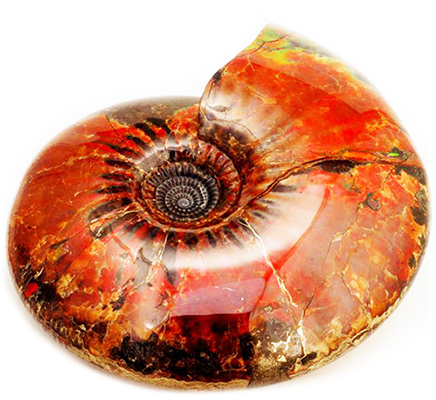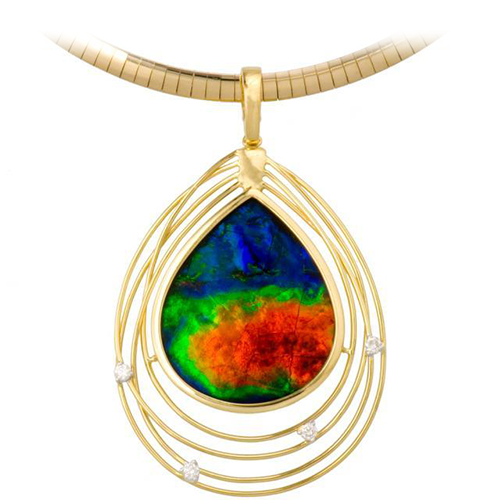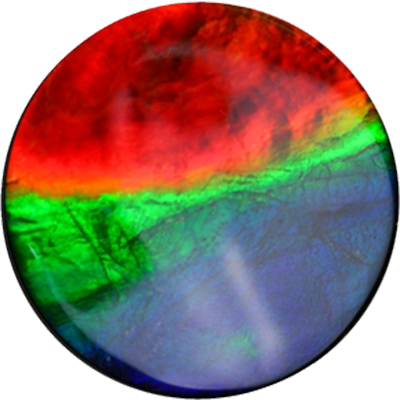AMMOLITE
What is AMMOLITE?
Ammolite is first and foremost a fossil. It is a prehistoric remnant of a sea-dwelling creature called an "ammonite," and it occupied the planet's waters up until 70,000,000 years ago. Its closest, modern day relative is the nautilus. Ammonite fossils can be found in many parts of the world. However, ammolite, an especially rare variant of those fossils, are isolated to only a 2.5 sq. km area in Lethbridge, Alberta, Canada. It is unknown as to why this is the only place in the world where ammolite occurs, and scientific efforts to re-create the conditions in order to sythesize this fossil have failed. Due to dwindling supply and the lack of new ammolite deposit discoveries, ammolite is considered to be one of the rarest gemstones in the world. The only known ammolite deposit is expected to be exhausted within our lifetime. Ammolite comes in every color, with pink being the rarest, followed by blue and purple. Ammolite is most often compared to opal due to its colors, as well as its organic and soft nature.


How are AMMOLITE gemstones made?
The cutting and polishing of ammolite fossils into gemstones is a process that is radically different from the processes of most other gems. Unlike black onyx for example, where the material is consistent and solid all the way through, the iridescent colors of ammolite is only on the surface, with the rest of the stone beneath it being fossil material. This makes the job of preparing a piece of ammolite and turning it into a viable gemstone complicated. Because of the nature of ammolite, it cannot be cut into a domed shape, lest you eliminate its defining feature entirely and be left with fossil material. Ammolite must be worked with on its own terms. If the surface is naturally flat, as is normally the case, then there are a couple of options. Most ammolite gemstones of geometric shaping are actually covered with a clear 'cap' of either quartz or spinel. This cap is usually thin and slightly domed, and is bonded onto the ammolite with resin. When the resin hardens, the excess ammolite material that is not covered by the cap is trimmed off, resulting in a geometric and symmetrical shape. Some ammolite gemstones do not have this cap, and instead are just coated with a layer of resin. This is most often done with freeform-shaped stones. On occasion, an ammolite gemstone will not have any protective covering. This is because the stone's surface is considered to be stable enough without one.

Facts about AMMOLITE
The ammonite disappeared over 70,000,000 years ago, but it is estimated to have first appeared more than 400,000,000 years ago. This means that the ammonite existed for a very lengthy period of time before being lost to extinction and evolution. Although it is not known as to why the ammonite fossilized into what we know today as ammolite in only one sliver of land in the entire world, we can be grateful that nature has left us a rare and incredible treasure. Like with all gemstones, ammolite can be graded and valued depending on the quality. The image on the right is a beautiful example of ammolite that is of exceptional quality. Most ammolite gemstones have a singular color, and contain natural flaws such as fractures. However, sometimes the fractures take the form of a consistent, scale-like pattern. This is called "dragon scale ammolite," and is highly valued. Flawless ammolite is a rare find, and the rarity factor is further compounded if the stone contains multiple colors. Ammolite gemstones that display three or more vibrant and distinctive colors are highly prized and sought-after by avid collectors, and command extremely high prices. Another type of ammolite is "mosaic ammolite," which has a peculiar mosaic-like distribution of colors.
